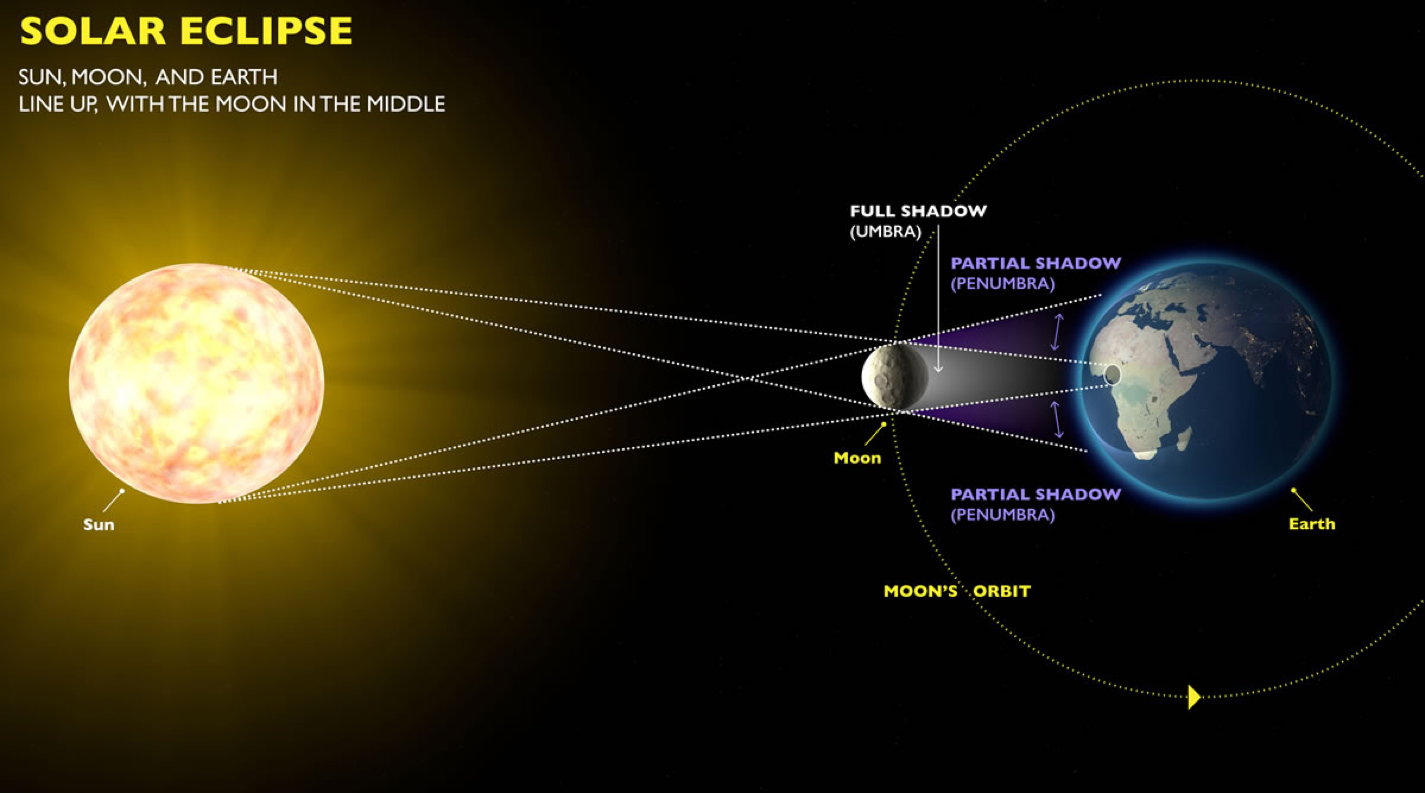
There are two types of eclipses, following each situation defined above.
A lunar eclipse is caused by the moon passing through the Earth’s shadow. This phenomenon is relatively common since all it requires is two celestial bodies to be lined up. Once it does happen, half of Earth -- the half that can see the moon at night -- can observe the phenomenon.
A solar eclipse occurs when the moon “eclipses” the sun. This means that the moon, as it orbits the Earth, comes in between the sun and the Earth, thereby blocking the sun and preventing any sunlight from reaching us.
There are four types of solar eclipses
Partial solar eclipse: The moon blocks the sun, but only partially. As a result, some part of the sun is visible, whereas the blocked part appears dark. A partial solar eclipse is the most common type of solar eclipse.
Annular solar eclipse: The moon blocks out the sun in such a way that the periphery of the sun remains visible. The unobscured and glowing ring, or “annulus,” around the sun is also popularly known as the “ring of fire.” This is the second most common type of eclipse.
Total solar eclipse: As the word "total" suggests, the moon totally blocks out the sun for a few minutes, leading to a period of darkness -- and the resulting eclipse is called a total solar eclipse. During this period of darkness, one can witness the solar corona, which is usually too dim to notice when the sun is at its full glory. Also noticeable is the diamond ring effect, or "Baily's beads," which occurs when some of the sunlight is able to reach us because the moon's surface is not perfectly round. These imperfections (in the form of craters and valleys) can allow sunlight to pass through, and this appears just like a bright, shining diamond.
Hybrid solar eclipse: The rarest of all eclipses is a hybrid eclipse, which shifts between a total and annular eclipse. During a hybrid eclipse, some locations on Earth will witness the moon completely blocking the sun (a total eclipse), whereas other regions will observe an annular eclipse.